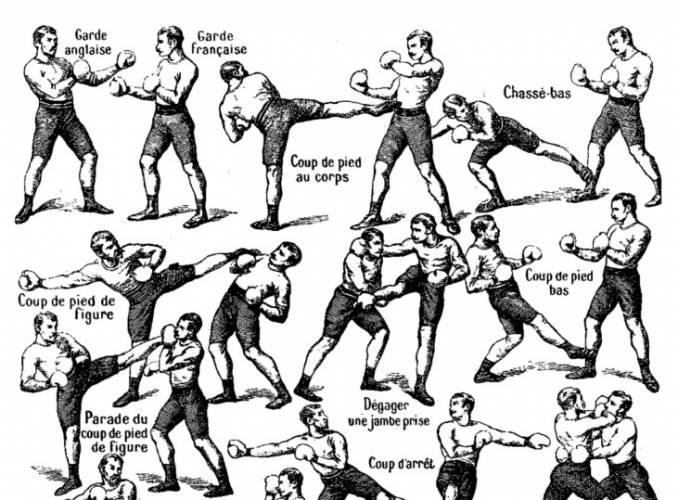French boxing is a bold, unpredictable, and sparkling game full of romantic illuminations.
André Dumas, French professional boxer
This is a beautiful quote from a French professional boxer, who played the sport from 1911 to 1920 and This quote shows just how much passion and joy Savate can bring. While most people in Canada know British boxing or Muay Thai, French boxing — also called Savate — is still quite unknown.
That’s a shame, because it’s a fun and expressive sport that combines strategy, speed, and control.
In any case, Canadian boxers may be interested in learning how to box in the savate style, for French boxing is a sport that we think is very worth knowing.
And don’t worry — you don’t need to speak French or know anything about French culture to get started. All you need is a good pair of boxing shoes, gloves, and the willingness to learn something new.
All you really need are boxing shoes, gloves, and a few standard pieces of protective gear — like a mouthguard, shin guards, wraps, and a chest protector.
And as for André Dumas’s "romantic illuminations"? Well, let’s just say it might be his poetic way of describing the stars you see right before a knockout.
Check out boxing classes vancouver here.

The History of Savate
Before modern combat sports took shape, savate martial arts emerged from the streets of France — a mix of self-defense, agility, and elegance. Unlike other french martial arts rooted in armed combat, savate developed as a form of boxing in French culture, combining refined kicking techniques with Western boxing punches.
1700's
Street Origins
Savate emerges as a street-fighting technique in the port cities of France, especially Marseille.
1719
First Champion
Western boxing sees its first officially recognized champion.
1808
Lecour Is Born
Charles Lecour, future codifier of Savate, is born in France.
1930's
Savate Codified
Lecour formalizes Savate into a structured martial art by merging English hand strikes with French foot techniques.
1899
Cross Influence
Louis Lerda introduces Western boxing to France, influencing training styles and public interest.
1903
Federation Formed
The groundwork for France’s first boxing federation is laid, organizing competitions and standardizing rules.
1907
Law Enforcement Use
Savate is adopted by Clemenceau’s police brigades, increasing its legitimacy as a practical self-defense system.
1924
Olympic Debut
Pierre Baruzy, a leading figure in Savate, competes in the Paris Olympics, highlighting its national pride.
1970's
European Growth
Savate spreads beyond France with the first European Championships, signaling its growing international presence.
Much like Muay Thai or Thai boxing, which evolved from ancient battlefield techniques in Thailand into a national sport known for its discipline and precision, savate kickboxing transformed street fighting into a regulated, elegant sport.
While Western boxing is often referred to as the "noble art" due to its early codification in the 18th century, french boxing gained popularity in the 19th century thanks to Charles Lecour. Lecour is widely recognized as the father of modern Savate.
By adapting English boxing hand techniques and combining them with powerful French kicks, he laid the foundation for what would become the national sport of savate kickboxing.
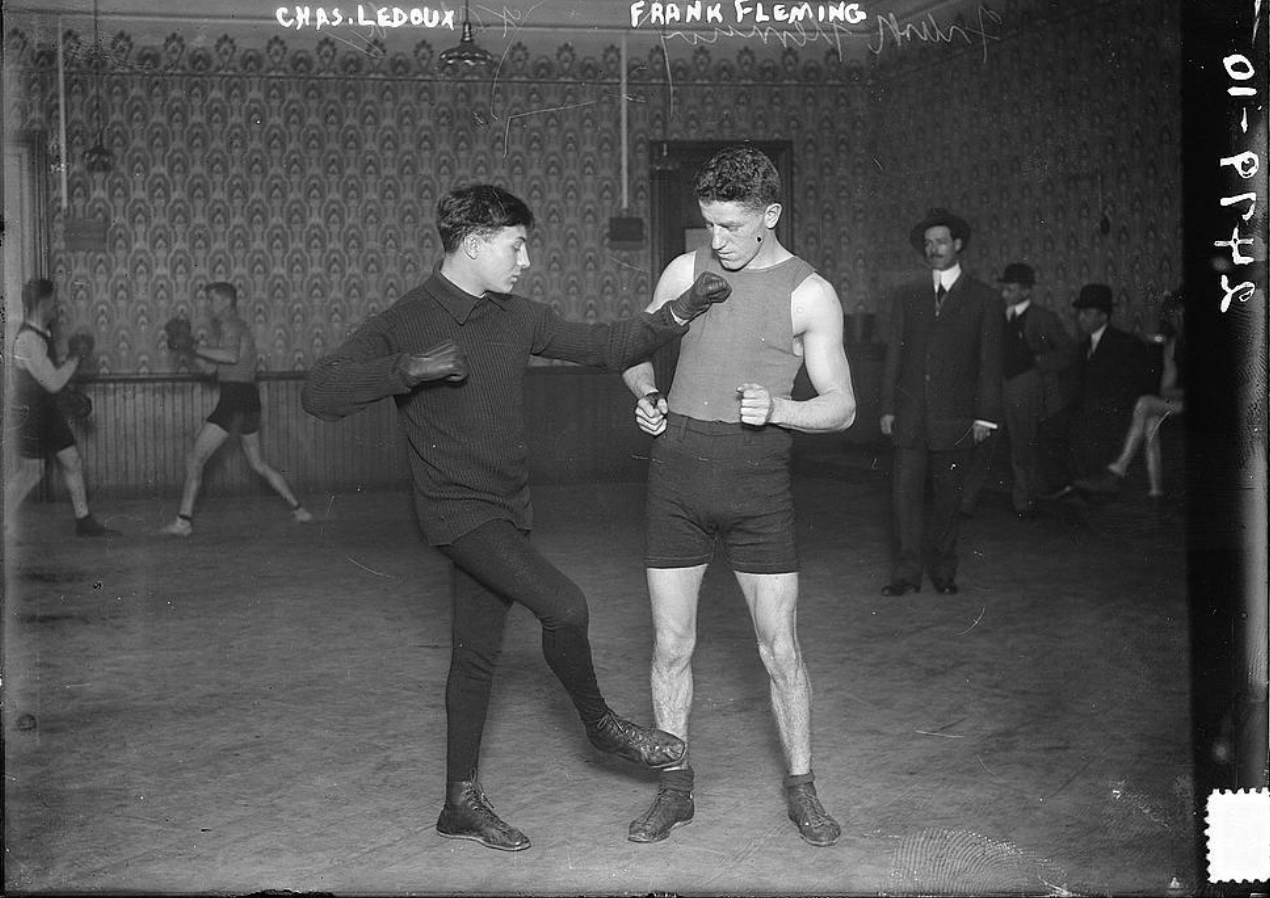
In 1899, Louis Lerda returns from the United States of America and prides himself in introducing Western boxing to France, with a first Parisian fight at Wagram Hall, while the semblance of a sports federation is erected by enthusiasts in 1903.
However, shortly before, French boxing - which is born in the streets - has been codified in the wake of its popularity throughout different regions in France (the most popular place for the sport remaining the capital of Paris). Charles Lecour (1808-1894) is considered the father of the Boxing Federation in France.
Charles codified French boxing into the sport that we currently practice today. It has evolved a long way from the different variants that existed some time ago.
This evolution led to the official recognition of Savate as part of France’s cultural heritage. Despite its roots in street fighting, today’s savate martial arts are taught under strict rules and etiquette, prioritizing technique, control, and respect.
Check for boxing classes in Toronto here.
Techniques and Rules of French Kickboxing
Savate may look elegant, but it follows a strict technical rule set. From footwear to allowed strikes, here’s how this French martial art is structured.
Savate clubs usually say that the spirit of French boxing resides in these four keywords: "ethical, educational, aesthetic, effective."
French boxing is a combat sport known for its unique combination of style and precision. It’s sometimes referred to as a "fist-and-foot fighting sport," but the feet play a much bigger role than the hands.
In fact, kicks account for up to 99% of the techniques used in this French martial art.
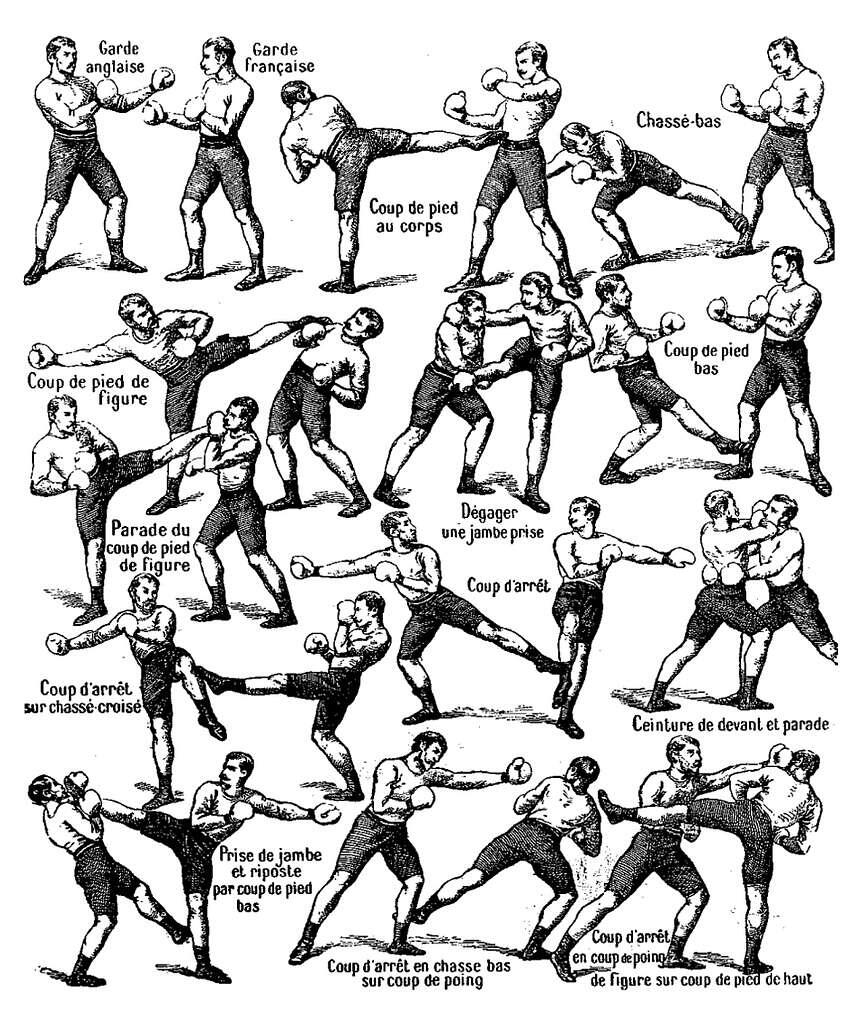
Savate bouts occur in a ring (4.5 × 6 meters) or in a boxing gym. Fighters must wear boxing gloves and special savate slippers. These shoes are essential because only the feet are allowed to strike — not the shins, knees, or elbows.
Savate matches are judged on style and technique over three 2-minute rounds, with disqualification after three warnings for aggressive behavior.
Strikes with the feet are called armed kicks, which are unique to savate. Moves outside of these parameters are considered fouls. When it comes to hand boxing techniques, savate borrows directly from English boxing.
Here are some of the most common types of kicks👇
Roundhouse kick with the toe (rubber-toed shoes), performed high, medium, or low.
Side or front piston-action kick (chassé lateral/frontal), performed high, medium, or low.
Hooking kick with the sole of the shoe, performed high, medium, or low.
A sweeping low kick to the shin with a backward lean, contact made with the inner edge of the shoe.
If the feet are at the heart of the game (as the name of savate points to in French!), shins and knees are absolutely prohibited. The offensive blows which are allowed are named "armed kicks" (the other types of kicks are forbidden). This is a process specific to French boxing.
👉 See more on kick boxing classes here.
In regards to the upper body, the four basic punches of boxing here are the jab, the cross, the hook, and the uppercut.
These are important types of punches👇
Jab (lead hand)
Cross (rear hand)
Hook
Vertical upward punch
Sweeps and throws are prohibited and in addition to its strict rules, savate emphasizes mental discipline. Most clubs follow four principles: ethical, educational, aesthetic, and effective. The sport values coordination, strategic thinking, and fluid movement over brute force. Savate can be practiced by men, women, and children.

Why Savate Is Called "French Boxing"
Unlike many other combat sports, Savate was born not from war or rural tradition, but from the refined streets and academies of France. Known for its upright posture, polished strikes, and sense of etiquette, it’s no surprise this style earned the name French boxing or boxe française.
While other French martial arts like fencing and canne de combat emphasize weaponry, Savate evolved into a precise fist-and-foot fighting style. And despite the poetic nickname, this discipline follows rules as sharp as its techniques: no low blows, no unguarded strikes from behind, and yes referees still wear bow ties at official events.
The name French boxing is also tied to its etiquette. In official competitions, low blows are strictly forbidden, strikes from behind are considered dishonorable, and referees traditionally wear bow ties — a subtle nod to the sport’s gentlemanly origins. This cultural attention to formality makes Savate stand apart in the combat sports world.
From the beginning, Savate has emphasized grace as much as grit. Its fighters don’t stomp or brawl — they glide, pivot, and snap with mechanical precision. Footwork isn’t just a skill; it’s a language.
Today, Savate may not be as globally known as American boxing or Muay Thai kickboxing, but its cultural legacy is unique, and its practice is steadily growing. So if you want something that combines tradition with physical challenge, this might be the discipline for you.
In France, Savate is more than just a pastime - it’s a nationally recognized sport with organized federations, ranking systems, and international competitions.
Fighters earn colored gloves (similar to belts in other martial arts), progressing from beginner to elite levels through rigorous training and exams.
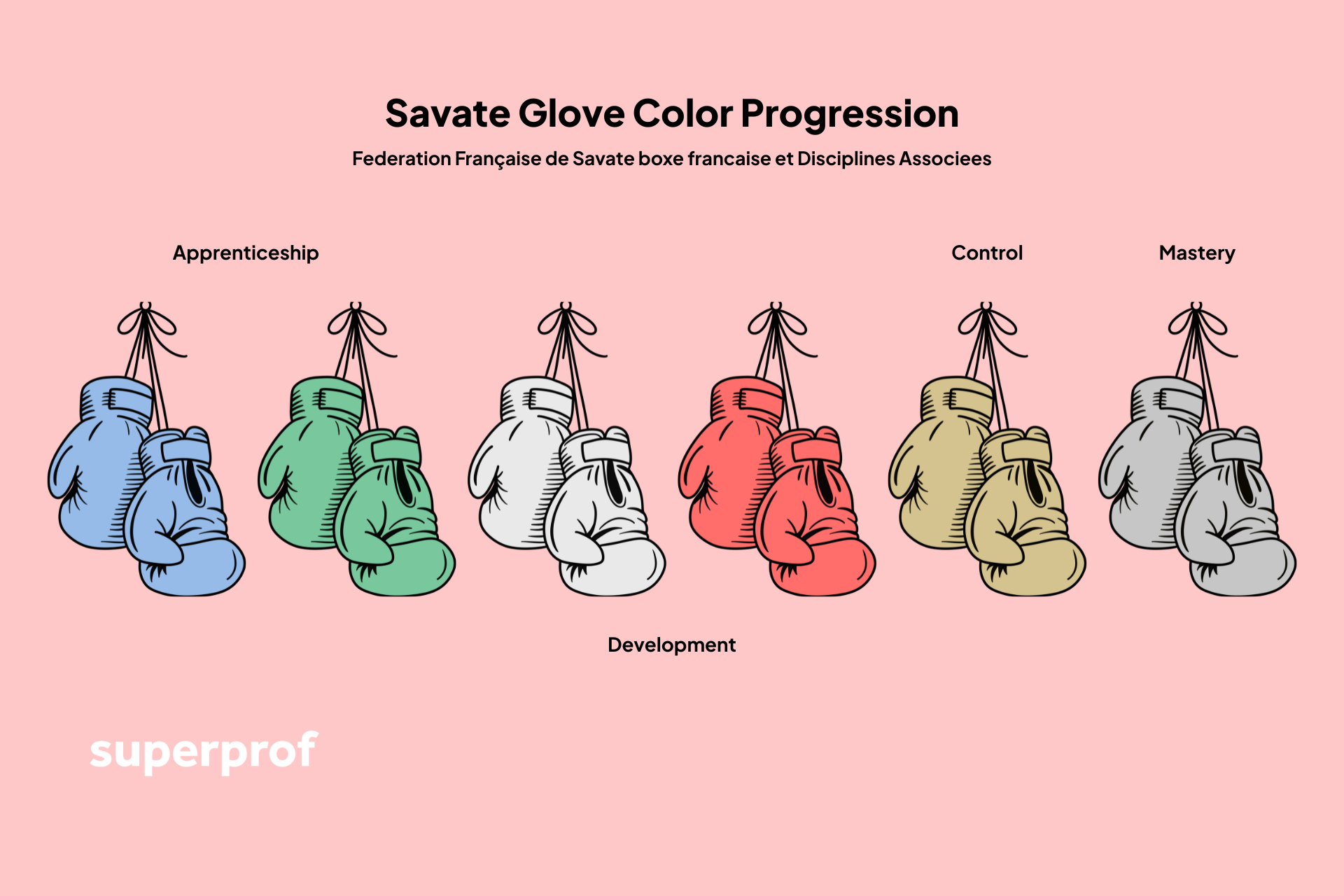
Today, national teams compete across Europe and beyond, with championships showcasing not just athleticism but the strategic and aesthetic qualities that define French boxing. Whether practiced for fitness, self-defense, or competition, Savate offers a well-rounded discipline rooted in tradition yet adaptable to modern goals.
What colour gloves are you on?
👉 Curious how it compares to modern fitness trends? Find out how shadow boxing could change your workout.
Savate Kickboxing vs Other Styles
When comparing Savate martial arts to other striking sports like Muay Thai, American kickboxing, or even traditional Chinese boxing, one thing becomes clear: Savate has carved out a refined, rule-bound niche within the world of combat sports.
Unlike the clinch-heavy and elbow-driven style of Muay Thai or the raw power seen in American kickboxing, French martial arts like Savate place greater emphasis on control, elegance, and strategic movement. Savate’s hallmark is precision as fighters glide across the ring with impeccable footwork, executing armed kicks with finesse.
This isn't just about power; it's about aesthetics, coordination, and clean execution.
Another thing that sets Savate apart is the approach to sparring. Many beginners worry about getting hit, and understandably so. The idea of stepping into a ring and taking punches can feel intimidating. But in Savate, sparring is introduced gradually, if at all. It’s mainly used in intermediate or advanced training as a way to test techniques, not to knock out your opponent. Even then, sparring is done with control and mutual respect — you’re not using full power, and it’s okay to request lighter contact.
If you’re just starting out, you can focus purely on pad work, drills, and conditioning. In fact, many people train in Savate solely for the fitness and mental benefits, never stepping into the ring, and that’s completely valid.
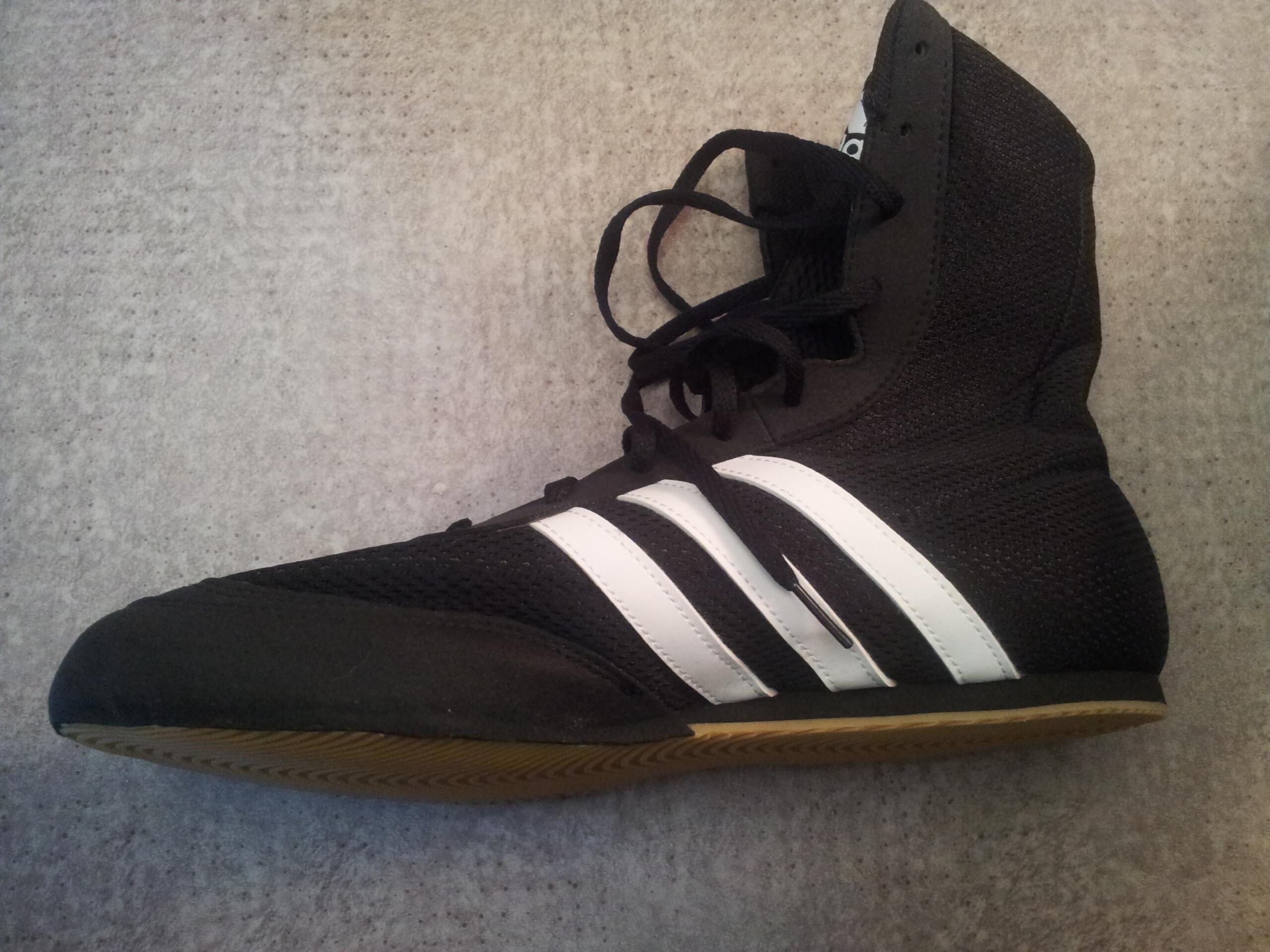
Savate also differs in its culture and attire. Fighters wear unique savate slippers, not barefoot wraps or shin guards. Like previously mentioned referees also tend to sport bow ties at formal competitions, and etiquette is deeply embedded in the sport's DNA.
And when it comes to injury rates, Savate is considered safer than many full-contact sports. Its strict rules prohibit low blows, sweeps, and dangerous strikes like knees or elbows, making it appealing for those who want to practice a martial art without excessive risk.
Below is a quick comparison of Savate, Muay Thai, and Kickboxing — exploring differences in technique, culture, gear, and beginner accessibility. Whether you’re drawn to aesthetics, power, or versatility, this breakdown can help you decide which style suits you best👇
| Feature | Savate (French Boxing) | Muay Thai | American Kickboxing |
|---|---|---|---|
| Origin | France | Thailand | USA |
| Strikes Allowed | Punches, feet only | Punches, kicks, elbows, knees | Punches, kicks (feet/shins) |
| Footwear | Yes – Savate slippers | No – Barefoot | Usually barefoot or shoes |
| Clinching Allowed | No | Yes | Limited or no clinch |
| Key Emphasis | Technique, control, footwork | Power, endurance, clinch | Speed, combinations |
| Defensive Focus | High – based on avoidance | Medium – often close-range | Medium |
| Aesthetic Scoring | Yes | Rarely | Rarely |
| Typical Attire | Gloves + slippers + uniform | Gloves + shorts | Gloves + shorts or pants |
| Common Use Case | Fitness, self-defense, competition | Fighting sport, cultural sport | Fitness, competition |
| Injury Rate | Low | Medium to High | Medium |
Find boxing classes in Montreal here.
Global Presence and Canadian Practice
French boxing may have started in the elegant academies and lively streets of Paris, but today it’s a global discipline. Countries across Europe, especially Belgium, Switzerland, and Italy, have embraced French martial arts, with official federations, coaching certifications, and regular international tournaments.
In France, Savate is officially recognized as part of the nation’s cultural heritage. It’s taught in schools, practiced in clubs, and even used in law enforcement training. But what about outside Europe?
In Canada, French kickboxing remains relatively under the radar. While disciplines like Muay Thai, traditional boxing, and Brazilian jiu-jitsu dominate most gym schedules, interest in Savate is slowly picking up — especially in culturally diverse cities like Montreal, Toronto, and Vancouver.
As explained in Superprof’s guide to French Boxing for beginners, Canadians don’t need to wear berets or sip wine to try it; just a willingness to learn and a good pair of boxing slippers.
What makes Savate appealing for Canadians isn’t just its heritage — it’s also the flexibility. You don’t need to spar if you don’t want to. Many beginners focus solely on the footwork, balance, and precision drills that define boxing in French.
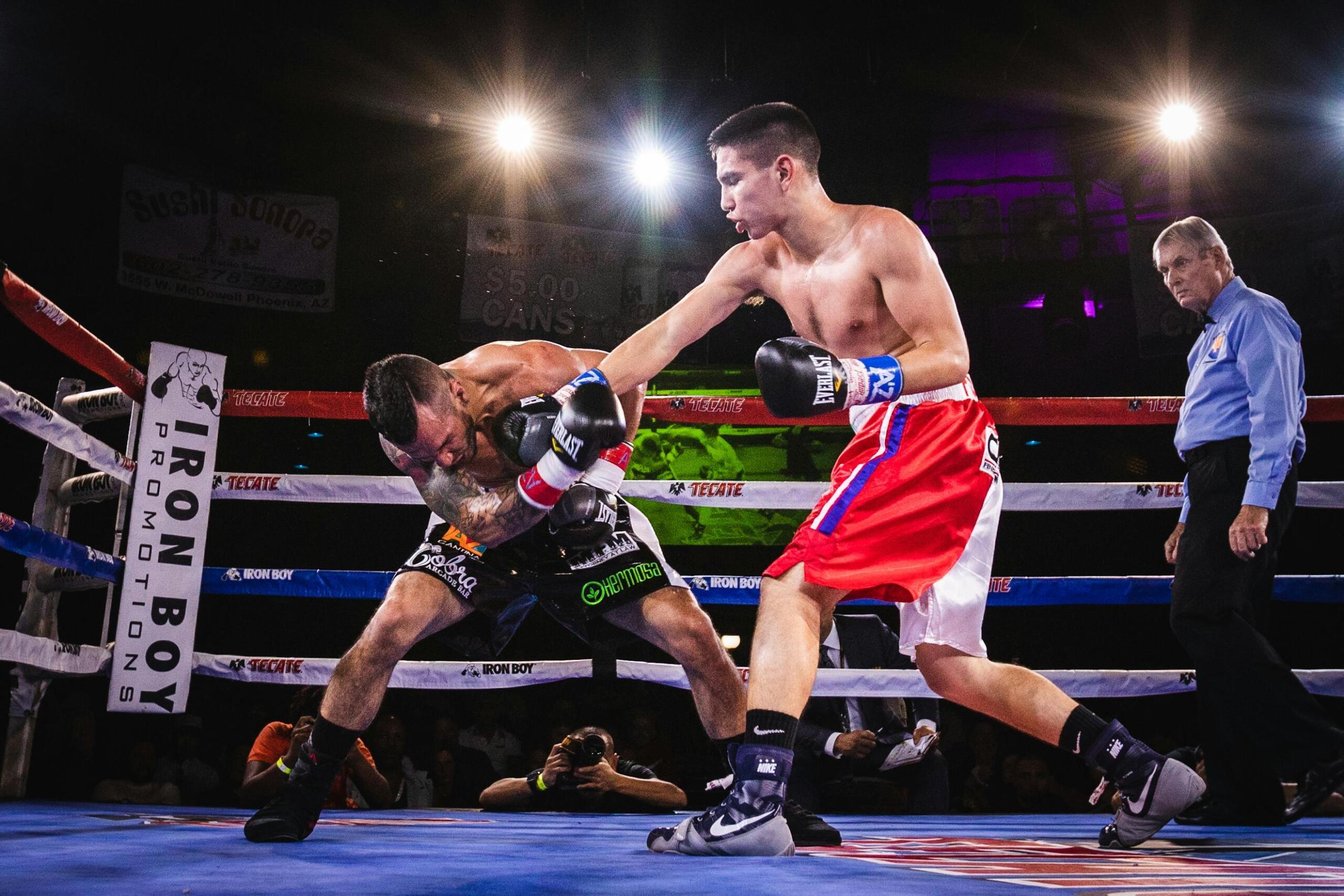
Unlike other martial arts that push full-contact sparring early on, Savate encourages a step-by-step approach. This makes it perfect for those training for fitness, self-defense, or simply curiosity.
🏆 And if you’re competitive? The road to championship in French boxing is mapped out clearly. Instead of belts, Savate practitioners progress through colored gloves, earned through rigorous training and testing. From beginner levels like blue and green, to elite stages like silver-gilt and gold, each color reflects a fighter’s skill and experience.
Today, more local gyms are introducing Savate-inspired classes or hybrid sessions mixing French boxing with other striking arts.
⚡ How to Start Training in Savate
If you're curious about trying Savate, you don’t necessarily need to jump straight into a gym as one of the great things about boxing is you don't need a lot of equipment. There are many modern ways to start:
- Books – Great for understanding history and theory, though harder for hands-on technique.
- Videos – YouTube channels and online tutorials offer free lessons to build foundational movements.
- Private Tutors – Personalized training can help with proper form, safety, and motivation. Platforms like Superprof can connect you with certified Savate coaches across Canada.
Savate is adaptable, as you can train solo with drills and shadowboxing or partner up for technical sparring. And no, sparring isn’t required, especially for beginners. Many people train for health and fun without ever entering the ring.
If you are looking for a savate boxing coach Superprof has lots of boxing coaches across Canada that are ready to help you learn savate boxing. They have the knowledge and experience to teach you the best way possible. They've worked with so many students they know how to work with you. Superprof also offers lessons online and in-person to offer you the flexibility and freedom to learn boxing when you want to learn.
Have you tried Savate Kickboxing before?
Benefits of Practicing Savate
Whether you’re a beginner seeking a fun fitness activity or someone looking to improve focus and coordination, Savate delivers a wide range of physical and mental benefits.
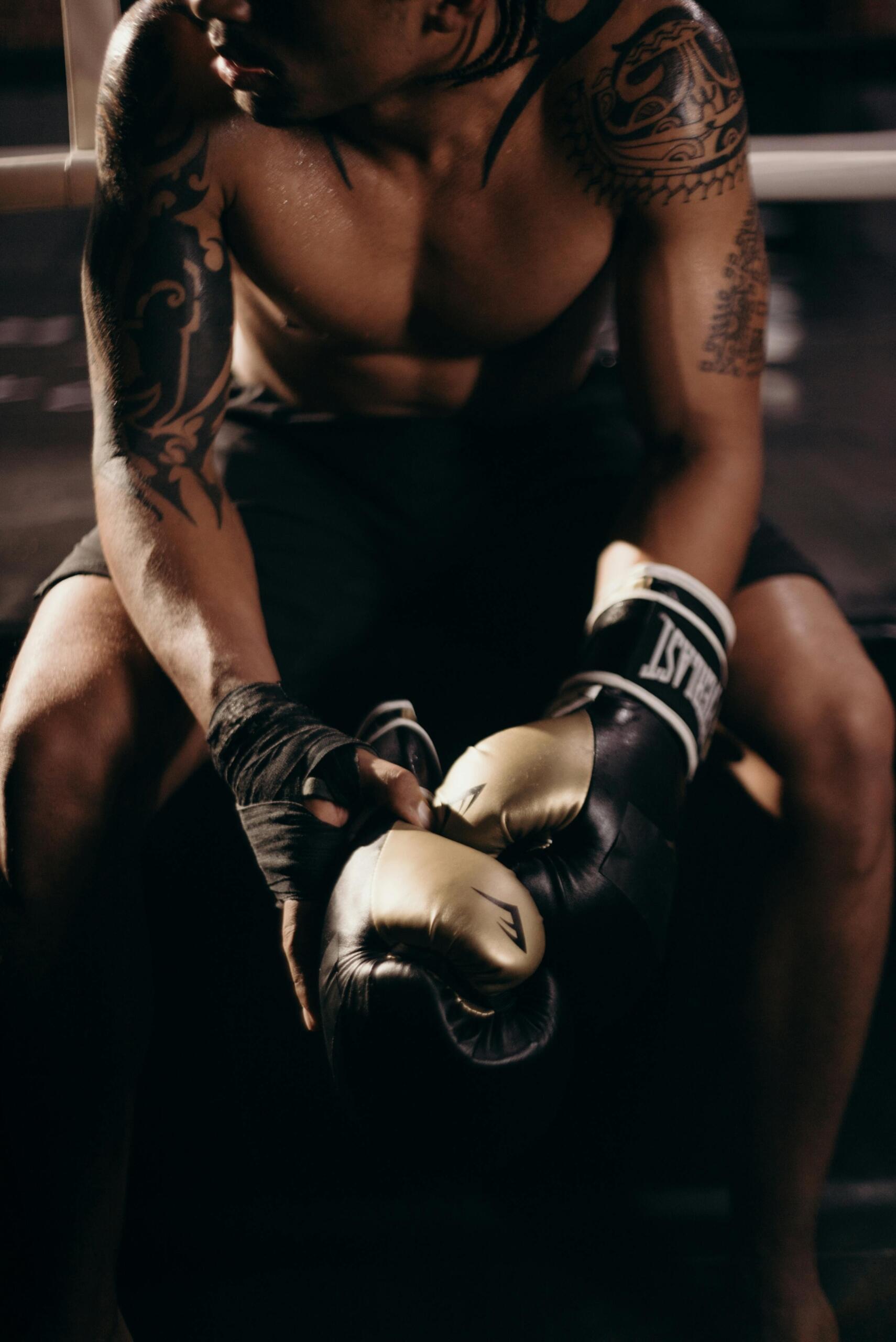
Stress Relief
French boxing is huge stress relief. We all have stressful days or even weeks. It's important to find ways that help you destress.
Boxing can be your solution. Hitting the bag or sparring you'll feel the stress melt away.
Savate boxing is also very technical. You have to think about the moves you're performing. Your mind will be completely away from your stressful thoughts.
Fitness
French boxing and any boxing style for that matter are very physical. It may not seem demanding watching it on t.v but going head to head with someone for even a few minutes is exhausting let alone for a couple of rounds.
Boxing is all about conditioning. This means most workouts are focused around cardiovascular so you can stay up in the ring.
Workouts are also backed by strength training to ensure you can have a good punch.
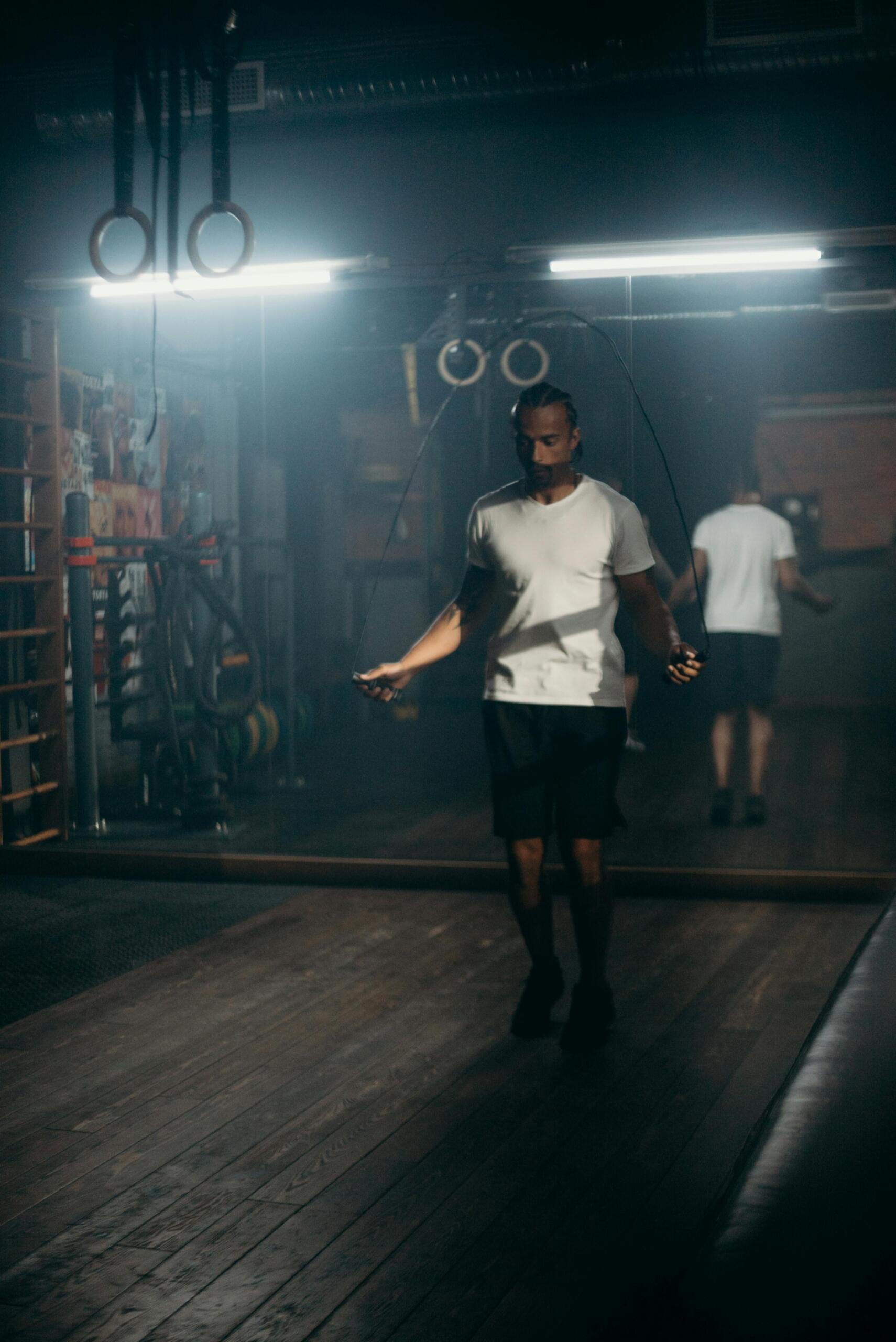
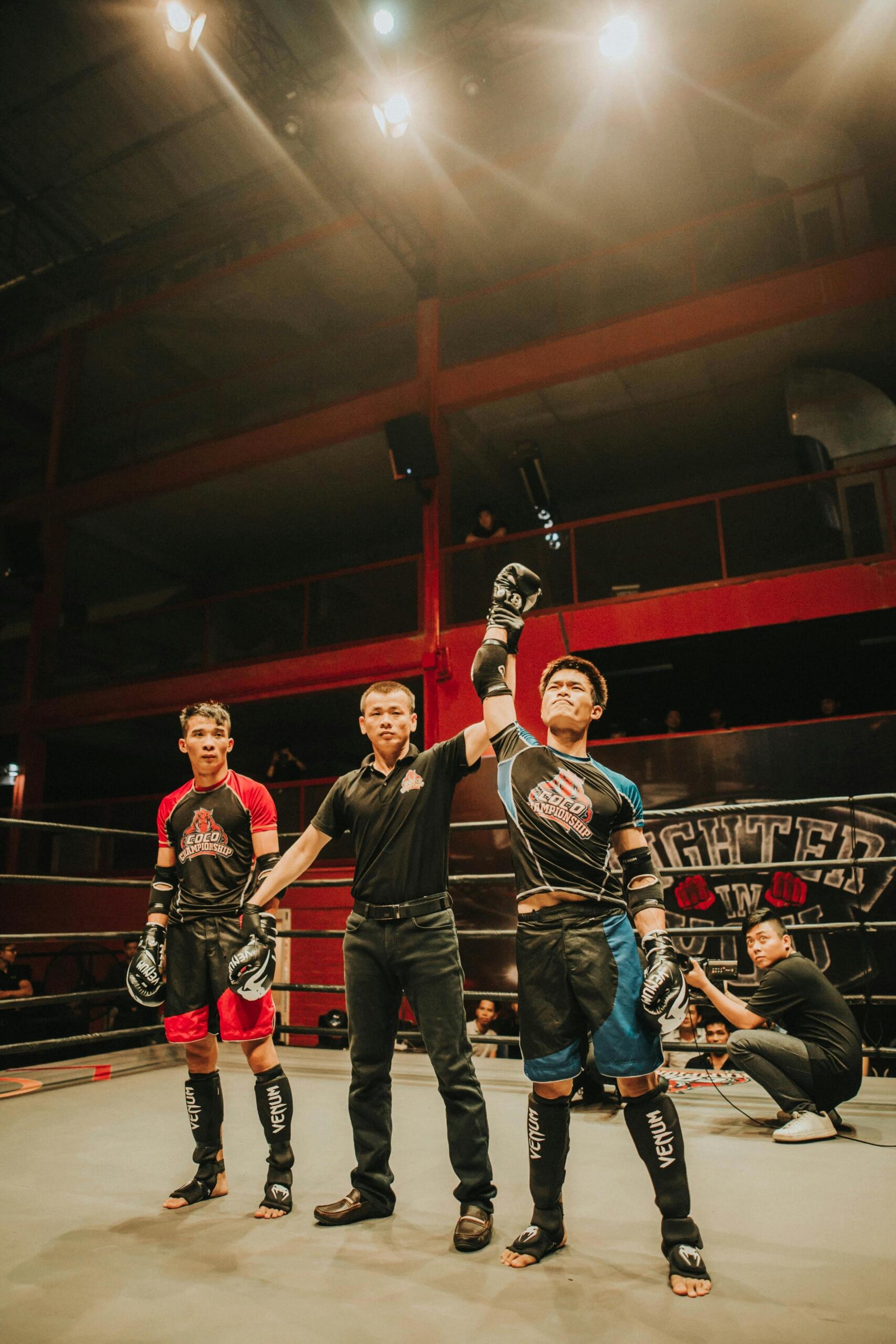
Confidence
French boxing can help build your confidence level.
You'll start to feel the physical changes from boxing, but you're also going to notice the mental changes.
It provides you with a sense of achievement and that in itself builds confidence. Being able to tackle a tough boxing workout or knowing you can defend yourself in-ring brings confidence which will transfer inside and outside of the boxing gym.
As a result, it is not surprising that this boxing is the boxing "most appreciated by the fairer sex," according to Cosmopolitan Magazine. Savate is both relaxing for the body as well as a fun activity that will allow you an escape from your daily life. No wonder savate attracts people seeking to maintain a slender and athletic figure.
Search for kids boxing classes here.

